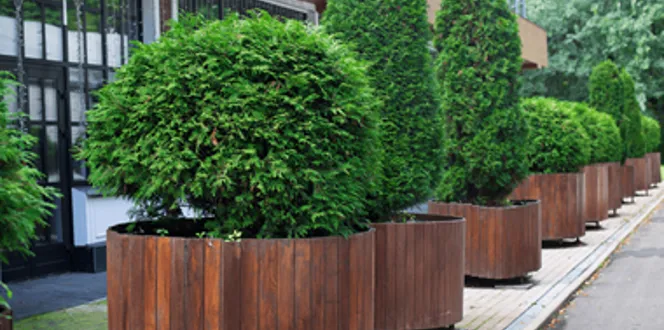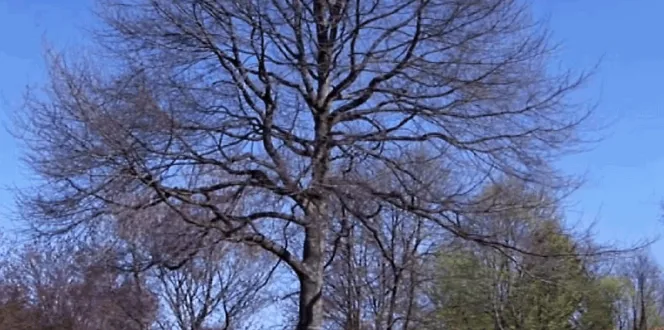Trees take some time to mature and provide their maximum potential shade, beauty, and other environmental benefits.
This is why when mature trees grow to a point where they are in the way of development or landscape construction on your property, you might do anything to keep them.
Preserving a tree is often desirable for homeowners who value the tree so much that they don’t want to see it damaged or cut down. Or maybe you want to move a large tree better suited for a different location where it would enhance shade or visual interest.
Luckily, there are some ways to transplant large trees to ensure their survival.
But these are techniques professionals use, to do this correctly. The job requires a plan with detailed preparation, local experts in the field, and best practices for digging and root protection to improve the tree’s chances for survival in its new location.
Let’s look at how to transplant a mature tree so you can better understand if this is an option for your property.
How Big of a Tree Can You Transplant?
Similar to moving smaller, more manageable trees, transplanting large trees is possible using the right strategies, patience, and expertise.
Most trees will transplant and adapt to new surroundings over time if, adequate time and care are given to their, watering, fertilization, and preparatory root pruning before transplantation. Digging adequate-sized rootballs during the dormant season, and watering properly before and after transplanting is extremely important to reducing shock, decline, and death of trees. Continuing proper care after the move is vital to their survival since a tree can have a three to five year or more transition period as it settles into its new home.
A certified arborist will want to inspect the tree to determine the proper course of action. A risk assessment should be completed prior to transplanting, assuring it is not in decline from disease or rot (this could mean it would be too stressed or unsafe to attempt to move). The new location would also need to be evaluated, ensuring it is suitable for the specific tree being moved.
The big difference in moving a smaller tree versus a larger one is the equipment necessary for the job. Depending on the size of smaller trees, they can be dug and moved using anything from digging shovels to tree spades. While larger mature trees may require gradual root pruning/digging, rootball protection using wire, burlap, and plastic to minimize the loss of moisture, placement on a solid platform or in a crate, and movement by equipment such as inflatable rollers, a truck, a gantry system, or a crane.
Can Mature Trees Be Transplanted?
The best time to transplant any tree -- whether small or large, is during the dormant period when it isn’t actively growing and trying to support leaves, flower, and fruit growth.
This period is when deciduous trees have lost their leaves or evergreens/conifers have slowed the supply of nutrients and water to canopies. This greatly reduces the chance of suffering transplant shock. The timing of this usually equates to fall or winter, but different trees have some preferences and consideration must also be given to local climate factors such as yearly rainfall patterns, snowpack, and frozen soil.
Transplanting Mature Palm Trees
While most trees require you dig large portions of their rootballs when moving them, palm trees are a bit different. It’s possible to dig closer to the trunk regardless of tree height and realize tree moving success. In fact, University of Florida research found that for most species of palms, roots that were cut 3 feet from the trunk survived much better than those cut 6 feet from the trunk.
This makes palms a bit easier to move, but that doesn’t mean you can ignore proper tree care before, during, and after transplanting mature palm trees.
For proper transplanting, consult with and hire a qualified certified arborist with the right equipment to support the entire length and weight of the palm. Check references to make sure they know how to move palm species with minimal damage.
Plant palms as soon as possible after they are removed from their current locations. Never plant them in new sites with high water tables or poor drainage. Bracing for support should be used on tall palms after replanting until they establish themselves in their new surroundings.
Why You Should Hire a Certified Arborist
Transplanting mature trees takes skilled hands with years of experience and know-how. The job requires time and meticulous attention to tree health and safety. After the tree is moved, years of monitoring and plant health care programs are needed
While you may be able to handle smaller trees yourself, taller trees are best left to professionals.
To find the right tree care professional with the proper training and experience to move your valued tree, contact your local Davey office.
Cost of Transplanting a Mature Tree
The cost to move or transplant large trees is challenging to guess without looking at a few key factors first.
- Location - Where the tree is located can add to your transplant costs when it comes to access. This is because we may have to work around your home, other landscape structures, or even power lines. The location the tree is being moved to, and the distance from start to finish, are also key factors in cost.
- Tree size - The larger the tree size, the more equipment will be necessary to capture the adequate amount of root system and safely move it to its new surroundings. Costs go up exponentially with tree size.
- Client specifications - You may have a special place you want the tree planted that requires special access, additional time, or equipment that could impact costs based on equipment and manpower necessary to do the job.
- Equipment needs - So many factors of transplanting mature trees can influence what equipment is best for the job. Larger equipment will require operators with specialized skills, which may change pricing.
- Safety and risk concerns - Particularly large trees or areas with challenging conditions can bring about larger risks. This can add to the job time to ensure safety for you, your home, the arborists doing the job, and your tree.
- Time and crew - Larger trees or logistical concerns that limit machine access can require more time and manpower to get the transplant done. When an arborist visits your home and provides you with a cost, he or she is factoring in all of the above to determine how long the job will take, how many people are necessary, and what equipment is necessary.
If you have a large tree that you’re interested in moving, it’s always best to get a free estimate to determine the approximate cost. Remember to ask the arborists what experience they have with moving mature trees, how they plan to do the job to ensure safety, and the tree’s success. Check to see if they are insured for this type of work and if they can share some referrals of clients who have had similar work done on their properties.





